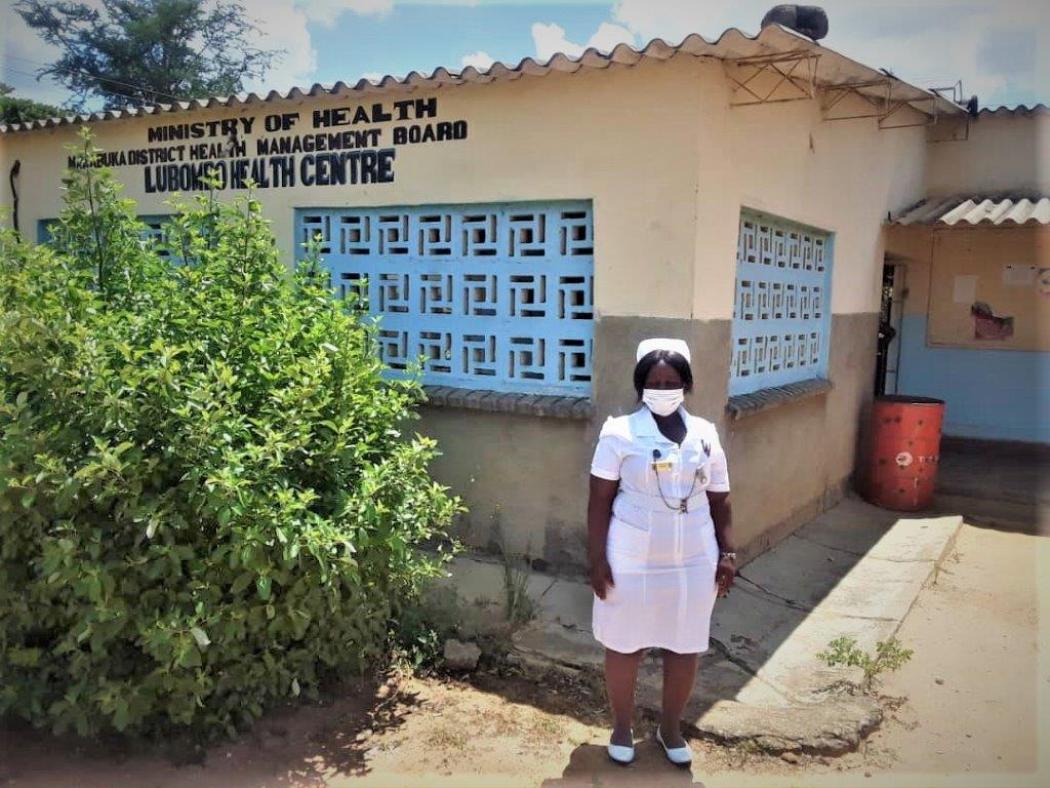Now’s the Time to Push for Advanced Roles for Nurses

Christine Phiri is an HIV Nurse Practitioner at Lubombo Health Centre in Zambia. Photo courtesy of Jhpiego.
Celebrated globally on May 12 to commemorate Florence Nightingale's birth 201 years ago, the theme of International Nurses Day this year is Nurses: A Voice to Lead - A vision for future healthcare. If ever a nurse had a vision for future healthcare, it was Nightingale, who, in addition to being a tireless caregiver was an innovator, teacher, and leader.
She revamped hospital care by establishing a laundry to provide clean linens for patients, and instituting a kitchen, classroom, and library to promote holistic healing. She also proposed reforms for military hospitals based on experiences in the Crimean War.
Her achievements are more remarkable given that, as a high-class Victorian woman, she battled her parents to answer a calling considered lowly and menial, and also fought with doctors for authority to make transformative change.
As nurses and midwives today advocate to expand our scopes of practice, we can look to Nightingale for inspiration about how to further shape roles such as that of the Advanced Practice Nurse/Midwife (APN/M)—a term that is different depending on the country and can include certified registered nurse anesthetists, clinical nurse specialists, and midwives who have advanced level education and skills.
The International Council of Nurses (ICN) defined an APN/M in 2020 Guidelines as a “registered nurse who has acquired the expert knowledge base, complex decision-making skills, and clinical competencies for expanded practice, the characteristics of which are shaped by the context and/or country in which s/he is credentialed to practice.”
Nursing Past
To put all this into a more specific context, let’s go back in time to the onset of HIV/AIDS in sub-Saharan Africa. Nurses were under skilled and overwhelmed until the World Health Organization promoted task shifting which led to nurse-initiated management of antiretroviral therapy (NIMART). A revolutionary game changer, NIMART has served to increase initiation, adherence, and compliance to antiretroviral therapy (ARV), saving thousands of lives.
Nursing Present
Fast-forward to present-day Zambia, where nurses with additional training prescribe ARVs and provide care under a 2019 law provision. Before this, nurses could not switch failing patients to second-line ARVs and were not legally covered to provide any drug therapy, despite a scarcity of physicians to care for HIV patients.
The HIV Nurse Practitioner (HNP) training program helped bridge this gap. Funded by the President's Emergency Plan For AIDS Relief (PEPFAR) and the U.S. Health Resources Services Administration (HRSA), the Health Workforce for the 21st Century (HW21) project worked with the Zambia Ministry of Health and General Nursing Council of Zambia to train HIV Nurse Practitioners who are now stationed at high-volume HIV primary care facilities. A second cohort is underway, with plans to reach all 10 provinces by July 2021, providing cost effective care that works.
The development of the APN/M role aligns well with the World Health Organization’s draft Global Strategic Directions for Nursing and Midwifery 2021- 2025, which will be debated by Member States at the World Health Assembly later this month. The document states that midwife and nurse graduates should match or surpass health system demand and have the requisite knowledge, competencies, and attitudes to meet national health priorities. the WHO strongly recommends the adaptation and upgrade of educational programs to facilitate a wide range of career pathways and degree opportunities to both elevate the professions and bring greater supported responsibility to nurses and midwives, who, in most instances, are already doing the work.
Nursing Future
All of this leads to a critical question: What do we want, and how do we further develop the role of the APN/M?
I would argue for creating regional platforms to coordinate and work across the continents and act as a hub to build on existing APN/M examples and minimize duplication of efforts. Kenya and Botswana are two forward-thinking countries with high burdens of disease and nurse and other health worker shortages that have successfully started down the APN/M path. Also vital is the development of a robust clinical governance structure, including continuing professional development along the health worker life course.
I look forward to the development of context-specific, evidence-based models across the globe, allowing for mobility, geographic comparability, and portability of skills and knowledge.
Act Now
We the public can’t afford to wait. Nor can we afford to fail as we reshape systems destroyed by the COVID-19 global disaster. It’s time to honor Nightingale’s legacy by amplifying nurses’ and midwives’ vision and voice, and further developing the APN/M role. Achieving the Sustainable Development Goals, ensuring Universal Health Coverage, and providing quality care requires nurses and midwives, notably, those educated and prepared as advanced practice nurse/midwives.
Let’s hold those making financial and policy decisions as accountable for health care outcomes as ministries of health. We need political activism: Write, call, and make noise about health care budgets, consistently. We need national and local committed funds for nurses, midwives, and all health workers.
Urge your Ministry of Health and health leaders to be present at the World Health Assembly debate on the Strategic Directions of Nursing and Midwifery, and make a public commitment to implement them.
It’s not just about “sheroism,” as 90% of nurses and midwives are women, but public support. Remember #ApplauseIsNotEnough.
